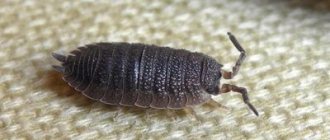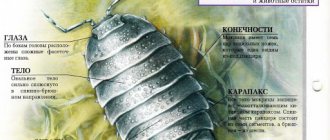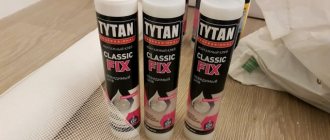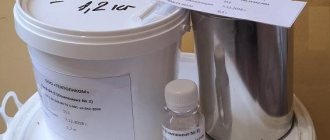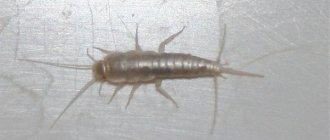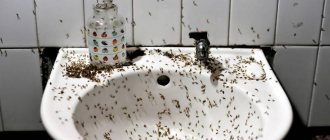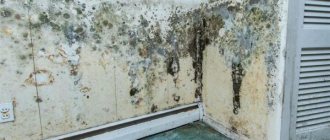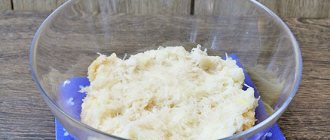Very often, houseplants suffer from infestation by harmful insects.
One of these pests is woodlice. However, it is capable of living not only on plants. It can also be seen in the bathroom.
You will learn about where you can meet an unwanted guest, why he appeared in the apartment, how many legs he has and how to distinguish him from other insects in this article.
Who are they?
Anyone who has ever seen a woodlice will say that it is an insect. Actually this is not true. These arthropods belong to the family Crustacea and the order Isopods. Over many centuries, this creature has adapted to live on land, but at the same time continues to breathe using gills.
It chooses a place to live that is humid and warm and where it is possible to eat. Most often they choose places near water bodies, in forests, groves and plantings. However, they can be seen in apartments and other residential premises.
Most often in an apartment they can be found in the bathroom because it is here that the humidity is higher than in other rooms. They can also be seen in bags of vegetables or in flower pots.
Wood lice feed on plant foods. Roots, leaves or fruits are suitable for this. They also choose living and dead microorganisms as food. Organic waste, house plants and pantry supplies are also suitable food sources for woodlice.
They are very afraid of bright light, which is why they are nocturnal.
Reasons for the appearance of woodlice in an apartment
One of the most important reasons for woodlice infestations is dampness . As their name suggests, these insects prefer places where the humidity level is quite high. That is why they can most often be seen in the toilet, bathroom or kitchen, close to the sink.
Woodlice feed on decaying foods or plant particles. A trash can that is constantly filled with food remains is a very good habitat for woodlice. Flower pots also serve this role perfectly, providing insects with food in the form of plant leaves and various remains of living organisms in the soil. Consequently, long-term stagnation of garbage will lead to the appearance of woodlice in the apartment, or they can inadvertently be brought into the house along with a houseplant.
Another reason leading to the appearance of woodlice in the house is the lack of cleanliness. Woodlice are attracted to dirt, stagnant water, clogged pipes, and the like. Thus, long-term neglect of cleaning and basic hygiene rules will eventually lead to the appearance of these small disgusting insects in the apartment.
So, having found out why wood lice appear in the apartment, you can safely begin the fight against them. Cleaning your home of woodlice involves several steps.
Species living in human homes - description and photo
Let's talk about the main types of woodlice. In the photo below you can see what the domestic woodlice that lives in our apartments is like, and what this insect looks like in close-up photographs.
Common woodlouse armadillo
It is found in basements and storerooms, in places where there is dampness. Reaches a size of up to 18 mm. When in danger, it curls into a ball. Has a dark color. The body is divided into segments that are clearly visible. Feeds on plant foods.
Rough
Selects residential and wet areas. She moves very quickly. Has a soft shell. Mostly it gets into the apartment from the basements. In the apartment it can most often be seen in the bathroom or in places where there is mold, as this is her favorite treat. However, this does not mean that it cannot be found anywhere else. It is adapted to live both in basements and bathrooms, and on the roof or attic. This species is especially dangerous for indoor plants.
White
It got its name because of the color of its body; its size is about 6 mm. Can be seen in the bathroom, in dark corners.
Read more about white woodlice, the reasons for its appearance and methods of combating it here.
Woodlouse - armadillo
Common woodlouse (Armadillidium vulgare)
is the most common type of crustacean that can be found in damp rooms such as a cellar, basement or attic. But in apartments and houses these parasites can be found quite rarely.
This species is very easy to recognize. They move rather slowly, and when some kind of danger arises in front of them, they immediately curl up into a ball, hiding their soft body with a shell. They are usually dark in color. If we are talking about personal plots or country cottages, then here in the garden you can often find this type of crustacean. You can find or see them somewhere under stones, under grass on the ground.
In food, armadillos give preference mainly to plants and grass, and they do not choose whether a flowering plant or one that is already decaying. In dachas, vegetable gardens and front gardens, this type of crustacean can harm your plantings and even trees. But fortunately for gardeners, these wood lice give greater preference to weeds or those plants that have already served their useful life.
Detailed description of appearance
Her appearance is rather unremarkable. The color can be white, gray, light brown or brown.
The body is oval in shape and tapers towards the bottom. Consists of segments and is covered with a shell. It has a strong chitinous shell, on which there are many pores, because of this the body does not retain moisture well. In the back of the body there are bifurcated tubes, it is through them that water enters the body. Some species may have a pattern on their back.
The body has a head and abdomen. Woodlice have 7 pairs of legs across two branches. One pair overlaps the other, and the outer branches create a strong frame. And on the internal vapors there are respiratory outgrowths and they perform the function of gills.
The front legs have respiratory organs in the form of air cavities that open from the outside. The first segment of the abdomen covers the head; the last segment has a deep notch.
There are two pairs of antennae on the head: antennae and antenullae. The anterior pair is not fully developed. The second helps you navigate and perceive the world around you. The eyes are located on the sides of the head. The upper jaws do not have tentacles.
What sizes are there?
Depending on their size, woodlice are divided into small, large and giant.
Little ones
The sizes of such wood lice range from 1 mm to 1 cm. Their color depends on their habitat. It can be blue, pink, yellow, etc. The habitat of small woodlice is living quarters and damp places. They feed on plant waste, mold and moss. They absorb moisture through milked tubes on the last pair of limbs. The secretions leave the body in the form of ammonia vapor due to the pores on the shell.
Large
Outwardly they are no different from small ones. The only difference is their size, which can be up to 4 centimeters. One of these woodlice is the tongue woodlice.
Gigantic
Again, they are no different in appearance, except for their huge size. There are 9 species of giant woodlice in total. One of the largest of them is the sea cockroach, the size of which is 10 cm. The habitat of this woodlice is water. It belongs to the deep-sea inhabitants. Deep-sea woodlice generally have a body length of 15 to 40 cm. The largest giant woodlice caught was the giant isopod Bathynomus giganteus, which was 76 cm long and weighed 1.7 kg.
What insects are similar to them?
- Silverfish. This wingless small insect belongs to the bristletail family. It is not a representative of crustaceans, unlike woodlice. Its body size is from 0.8 to 1.9 cm. The body has dense silvery scales, and it ends with a pointed tail, which woodlice do not have. Unlike the woodlice, which has seven pairs of legs, the silverfish has only three.
- Kivsyak. Representative of bipedal centipedes. It has a segmented body, with two pairs of legs on each of them. Woodlice have only 14 legs. It has a round body shape, which differs from the oval body shape of the woodlice. They breathe with the help of tracheas, and woodlice use gills for this. They also differ in body size: in woodlice up to a centimeter, in woodlice from 3 to 30 centimeters.
- Glomeris. They are bipedal centipedes. They are often confused with woodlice. However, they are easily distinguished by their glossier color, more legs and the presence of a shield behind the head. Their colors are varied: black, yellow, brown, etc. The body is covered with 12 visible scutes. The number of legs varies from 17 to 21, but woodlice have fewer. They feed on living and dead parts of plants.
Follow simple rules when creating optimal living conditions and indoor microclimate, do not allow high levels of humidity in your house or apartment, and then you will never meet an unwanted guest in the form of woodlice.
If you find an error, please select a piece of text and press Ctrl+Enter.
Woodlice are called insects conventionally. Woodlice belongs to the class of crustaceans, the order of isopods. In nature, it lives near bodies of water under stones, pots, and old stumps. In urban areas it lives in sewers, near garbage cans, and in damp basements. Periodically appears in an apartment or a person’s house when there are favorable conditions for the existence of insects.
Description of appearance
Woodlice is a crustacean creature that lives in damp areas. A terrestrial creature located in a place with high humidity.
- The oblong body of a convex shape is divided into segments. Adults have 7 of them.
- There are two pairs of antennae on the head. The first ones are short, poorly developed, the second mustaches are long. This is the main organ that helps the insect navigate in space and look for a food source.
- The structure of the woodlice is simple. There are 7 pairs of straight legs on the sides, ensuring fast movement. The sixth pair of limbs faces backward, helping the insect to quickly change direction of movement. How many legs a woodlice has depends on its age. Adults have 7 pairs, while larvae have only 6.
The first 5 segments of the body are free, overlapping each other like tiles. Their internal part plays the role of gills - respiratory organs. The upper part protects the body and is a hard shell. Insects breathe with the middle part of the body, the respiratory organs are simplified. The last segment ends with a long tail. In some species, the whiskers and tail look the same; it is difficult to determine where the beginning and end of the body are.
The size of woodlice is no more than 18 mm. Body color may vary depending on the species and age. The color is gray, ash, white, brown. The larvae are always lighter than adults and are born with a white shell. A photo of the woodlice is shown below. You can carefully examine every part of the body.
It is difficult to determine by appearance whether it is an insect or not. Some call the crustacean a harmful bug. Experts, answering the question of what woodlice are, classify them as crustaceans. In everyday life, they are used to calling them insects, without really looking closely at the structure of the body and the features of their vital functions.
Measures to prevent the appearance of woodlice
In order to prevent the appearance of pests, the following prevention methods must be followed:
- promptly check all pipes and taps for the possibility of water leakage;
- monitor the cleanliness of the premises;
- eliminate gaps and cracks in the floor;
- eliminate humidity in rooms;
- dry the laundry thoroughly.
Good to know! Regularly ventilate the room and use special antibacterial agents when washing the floor.
What to do if woodlice appears again?
If insects have reappeared in the apartment, this may mean that there is food waste somewhere or places with high humidity levels have not been completely eliminated.
In such cases, it is necessary to re-expose the insects to special chemicals, not only in places with high humidity, but also in all secluded corners, including the baseboard area.
In cases where it is not possible to remove wood lice, you need to seek help from special sanitary organizations.
Let's celebrate! The appearance of woodlice can have a negative impact on human health. Since insects very often carry a large number of microbes and can contribute to the occurrence of diseases. Insects also have an unpleasant appearance and, in the absence of chemical exposure, multiply very quickly.
Where live
Habitat: areas near water sources. These can be either natural reservoirs, sewers, barrels of water, or damp rooms. Different types of woodlice prefer their own places - stones on the river bank, old stumps, pots, garbage cans, abandoned buildings, sewers, pipelines, basements, cellars, damp houses. The insect often settles in greenhouses, greenhouses, and compost pits.
People enter a person’s home when weather conditions worsen, with the onset of cold weather. They settle in the bathroom, toilet, closets, and damp corridors. Favorable living conditions:
- high humidity;
- open access to water;
- lack of direct sunlight;
- availability of food.
Taste preferences
What woodlice eat is interesting not only to nature lovers. The question arises for everyone who notices an incomprehensible creature in their bathtub, sink, or toilet. What attracts the insect, how long can it live in the house.
What do woodlice eat in nature - decaying plants, mold. In damp places such food is present in great abundance. Insects live quietly on the street, in basements, without attracting attention to themselves, without causing harm.
With the onset of cold weather, the crustacean makes its way into human housing. The food for woodlice in an apartment is mold, which remains on the walls, water pipes, and pipes when sanitary and hygienic requirements are violated and there is high humidity. And also wet toilet paper, dirt in the corners, on the pipes.
Life cycle
The peculiarities of the life of crustaceans force them to hide during the day and crawl out of shelters at night. You can notice the insect in the evening or during the day in a dark room. Woodlice reproduction in nature begins in April-May. Females mate with males, the seminal fluid enters a special segment on the body. How woodlice reproduce in the future is a rather interesting process.
Benefits and harms
Woodlice in nature
In nature, woodlice in large numbers are not called pests. Their significance in nature lies in the processing of rotting, decaying grass. Healthy plants and crops do not attract insects. Woodlice, settling in hotbeds and greenhouses, do not disrupt the growing season of the plant, but save it from fungi and mold. They also loosen the soil, enriching it with oxygen. When assessing the balance between benefit and harm, the beneficial properties of insects prevail.
Why wood lice are dangerous for humans, some experts say - the spread of pathogenic fungi and lichens. In most cases, these creatures are called pests only because they sneak into the apartment and scare the residents with their appearance. Apart from disordering the nervous system, fright, and stress, woodlice do not harm anyone. Insects do not bite and do not spread dangerous diseases.
If the apartment is unsanitary, wood lice live not only in the bathroom, toilet, but also crawl into the kitchen. In this case, their presence in the house is even more unpleasant. Insects crawl on tables, food, dishes, and the sink. In this case, the risk of infection increases, but the person himself is more to blame for this.
Varieties of woodlice
In our area, the common wood louse predominates. Her body structure and appearance were described above. In nature, there are many species of crustaceans, which also frighten people with their appearance.
- Rough woodlice. Externally it differs in color - brown color predominates. Rough shell, hence the name. The body is flexible. When in danger, he prefers to run away and does not curl up into a ball. It settles in greenhouses, warehouses, basements, and appears in apartments during the cold season.
- Giant woodlice. There is no representative of this species of woodlice in our area. The sea creature is never shown on land. The size of the crustacean reaches 7.5 cm. The giant creature is capable of seriously scaring a person in the water. Despite its terrifying appearance, the crustacean is safe and does not even bite.
- Cymothoa exigua or tongue woodlice. A symbiotic parasite that lives in the mouth of the pink snapper and replaces its tongue. The length of the parasite is 4 cm. It is not able to cause harm to humans;
- Cylisticus convexus. Lives all over the world. The carapace is smooth, dark in color. Prefers rural areas. Lives in compost pits, barns, cowsheds. It poses no danger to animals or people and rarely appears in apartments.
Land crustaceans are conditionally classified as pests. The appearance of woodlice in an apartment is a signal for the owners - it’s time to do repairs, clean up the bathroom, toilet, and overcome dampness. In a room where there is no dampness, no mold, no dirt, wood lice will never live. If you clean up your house, you won’t have to fight insects; they will gradually disappear on their own.
Which ones live in nature?
Individuals are found in all landscape areas around the world.
- Common armadillo. Habitat: Europe, America. These individuals are the most common invertebrate creatures in the coastal grasslands of California.
- Sea lice. They live in the waters of the Atlantic, Pacific and Indian oceans at a depth of 180-200 m.
- Transparent woodlice. Tropical rainforests, equatorial zones with prolonged rainfall.
Despite the constant need for moisture, woodlice can be found in the most extreme areas of the earth - deserts in Israel and North Africa, hypersaline pools in Australia.
Find out what a woodlice looks like in the photo and what types of insects exist in nature in this material.
In apartments and houses
There are 2 types of woodlice in inhabited apartments and houses: the common woodlice or armadillo and the rough woodlice (find out where woodlice come from and how to get rid of their presence in an apartment here). The first individuals usually choose damp cellars and damp basements for housing. Rough crustaceans can be found in apartments and hallways. These are more mobile individuals; they easily overcome the floors of apartment buildings.
Read about the reasons why woodlice appear in the house and apartment and how to get rid of them, and find out about woodlice living in the bathroom and toilet in this material.
Preventive measures
To prevent the appearance of insects in the bathroom and toilet, you must:
- Repair taps, pipelines.
- Get rid of moisture, dampness.
- To clean up.
- Wipe pipes, pipelines, floors in hard-to-reach places.
- Get rid of wet rags, napkins, washcloths.
- Wash the floor every week with the addition of a chlorinated product.
- Place a grille on the ventilation hole, seal the cracks in the wall and floor.
Insecticides are used to control insects only if other measures do not give the desired result.
Woodlice, as its name suggests, prefers damp and humid environments. Some species of this crustacean can even be found in an apartment, namely in the bathroom or toilet.
Chemicals against woodlice
The use of chemicals makes it possible to eliminate pests, but such methods have the disadvantage that they can cause harm to human health.
Dichlorvos
The use of dichlorvos allows you to eliminate almost all types of insects. To use, spray the chemical into areas where wood lice accumulate and close the room for a few minutes. Then sweep away the insects and rinse the floor with chlorine water.
Chalk
The use of special crayons allows you to eliminate insects in hard-to-reach places and under baseboards. To use, simply rub the chalk in the area where wood lice accumulate and leave for several days.
Mashenka chalk, which contains boric acid, is often used.
Varan
It is produced in the form of a spray, which must be sprayed into areas of accumulation and close the room for several hours. The substance has a relatively low cost and quickly disappears from the premises without causing harm to the human body.
Mole
It is most often used if pests appear from the drain. To eliminate them, you need to pour the substance into the pipe and leave for several hours, then rinse with plenty of water. The mole helps dissolve the woodlice's shell, which leads to its death.
Tetrix
It is recommended to use for large accumulations of wood lice; it allows you to eliminate pests for a long time.
To use, you need to dissolve 10 ml in a liter of water and spray the woodlice habitat. The effect of the drug lasts for 2 days, after which it is necessary to rinse the floor with chlorine. Produce a chemical in liquid form.
Tarax
A chemical used to control pests is produced in powder form. The product quickly sticks to the insect and is transferred to places of accumulation.
To prepare the solution, you need to dilute a sachet of the product in 200 ml of water and spray it in places of high humidity. The results from using a chemical product are noticeable after a short time, in addition, the product allows you to eliminate other insects such as fleas and bedbugs.
What does a woodlice look like?
Woodlouse, appearance, photo
The woodlouse has an oval-shaped body, with a slightly convex upper part. The body consists of eight segments, the first wraps around the head, the last has a notch, and on the abdomen the segments are in a free position. The body of the woodlice is reliably protected by a dense shell.
The woodlice has two pairs of antennae on its head: one is weakly developed and the other is strongly developed. The eyes are located on the sides of the head. The woodlice has a jaw.
Who are wood lice?
Woodlice (Oniscidea) is an arthropod from the suborder of crustaceans. It is distinguished by an oval, convex body at the top, consisting of several segments. It is covered with hard chitinous bristles that protect against attacks from enemies. The color of the crustacean varies from gray to brown. Woodlice has two pairs of antennae: the first are short, the second are well-developed and elongated.
The body of the crustacean consists of a head extending into the chest. At the end of it there are tactile organs that resemble tail appendages. Woodlice has 7 pairs of walking legs. The insect's eyes are located on the sides of its head.
Woodlice eyes
According to the generally accepted classification, woodlice are divided by size: small, large and giant.
- The former live mainly in residential areas, preferring damp places. Their body size is from 1 to 10 mm.
- The length of the latter reaches 4 cm. These insects are found in garden plots, forests, and near fresh and salt water bodies.
- Still others grow up to 75 cm. Giant woodlice live in the depths of the seas and oceans.
These crustaceans are nocturnal, preferring to hide during the day in dark, damp places away from sunlight. And only in the evening they leave their shelters, going in search of food. In case of danger, many woodlice curl up in a ring and pretend to be dead.
These crustacean arthropods feed on plants, namely their root processes. They are able to eat both rotten and living parts. Also, the digestive system of woodlice can process waste products of insects, animals, cellulose, and even some poisons. Their lifespan is 9-12 months.
The peculiarity of these crustaceans is that, given favorable conditions, they are able to reproduce very quickly. The female lays 30 eggs daily. Moreover, she keeps them in a special bag on the body until the autopsy. At birth, the size of the young does not exceed 2 mm.
How do woodlice reproduce?
Woodlice with babies, photo
The mating period for woodlice falls in April-May. During the process of copulation, the male fills the female's testicle with seminal fluid. After some time, the testis bursts and the seed enters the oviduct. At this time, the female molts, which leads to changes in her appearance: the paired genital openings close, transforming into unpaired slits, and a brood chamber appears on the five front pairs of legs. Fertilized eggs enter it, where they begin to develop.
But not all of the seed is converted into eggs; a certain amount remains and participates in fertilization after the first generation is born.
Woodlice eggs hatch into larvae that develop in the brood chamber for 40-50 days. The larvae have 6 pairs of limbs. During their development, they experience 10-12 molts.
Appearance and characteristics of woodlice
Most people consider woodlice to be insects, which is completely wrong. They belong to the class of higher crayfish. Of the entire order of isopods, these animals are most adapted for life on land, but high humidity is a necessary condition for their existence. In a dry climate, there is a large loss of moisture from the body through the pores in the exoskeleton and the woodlice dries out.
Most often in Russia, the common woodlice, or as it is sometimes also called, the mumps, gets into private houses and apartments. She received her nickname due to her rounded body of a gray or yellowish tint. These creatures grow up to 2 cm. The delicate body is covered with a dense shell. The adult has 7 pairs of legs, the larva has only 6. The segmented structure of the exoskeleton allows the crustacean to curl up into a ball in case of danger, protecting the abdomen.
Appearance
Woodlice not only look unpleasant, their entire body structure is quite unusual. For example, they have blue blood and breathe through gills. Females have two holes for receiving seminal fluid. The fertilized individual forms a brood chamber on the abdomen, where the eggs mature. Small creatures leave their mother, having already fully developed.
If you encounter a white woodlice in your apartment, you should not assume that it is some kind of new species. These creatures acquire this color immediately after molting. Over time they will darken.
Their nocturnal lifestyle allows them to hide from humans for quite a long time.
Types of woodlice, their habitat
Woodlice live on land, although some species live primarily near the shores of water bodies. They prefer damp places: under stones, trees lying on the ground, in basements, cellars, utility rooms, garages, etc.
There are many species of woodlice – more than 3.5 thousand. On the territory of Russia you can see more than ten species, but if we talk about houses and apartments, then their number is reduced to only two.
The most common type of woodlice is the common armadillo. This crustacean can survive even in harsh conditions. It has a dark and high shell. Most often, such woodlice can be found in the basement or cellar, but it rarely lives in the apartment itself.
The armadillo woodlouse came to the United States from Europe, and it very quickly took root in its new habitat. Even today, on the coasts of California, people encounter entire colonies of woodlice, consisting of 10 thousand individuals.
Another common species of woodlice is the rough woodlice. This is what can be found in houses, apartments and various rooms with high humidity.
The rough woodlice has a soft, flat shell that is light grey, red, yellow or black. She moves at high speed and easily moves between floors.
This parasite leads a hidden lifestyle and is active at night. At this time, adults emerge from their hiding places and go in search of food; they can be seen on the walls, on the floor and in trash cans.
Woodlouse (Porcellio scaber)
If we compare the first type and the second, we can say with confidence that the rough woodlice moves quite quickly and can move between floors at a fairly fast speed. Compared to the first type, the second can be found more often in apartments. Sometimes rough woodlice can move in flocks from the attic to your apartment.
Unlike the armadillo, the rough woodlice, when caught by a person, does not curl up into a ball and does not protect its body with a shell, but, on the contrary, arches and begins to flounder with all ten legs in different directions in the hope of breaking free and running away.
The appearance of this species is that the shell is soft and flat. And its color depends on the area in which the rough woodlice lives. So, for example, if a woodlice is found in the northern part of our country, the color of the shell will be darker than usual, and if in the southern part, the color will change to lighter.
When this type of crustacean gets into a house or apartment, it literally destroys everything in its path and feeds on everything. If we talk about attics and basements, then they will also find something to eat there, for example, leftover vegetables and fruits. In your garden, farm, greenhouse or orchard, they can also cause damage to your crops.
If this species ends up in warehouses, then this agricultural product will come to an end.
Where do woodlice come from in the house?
As mentioned earlier, woodlice prefer damp rooms. They start in damp attics, garages, basements, cellars and sewer channels. Then from there they can move to apartments, most often to those located on the first or last floors.
Woodlice grow in apartments where there are conditions suitable for them:
- excess moisture (for example, plumbing is leaking in the bathroom, the rooms are poorly ventilated);
- stagnant water in flower pots;
- dirty dishes in the sink;
- rotting garbage.
If you carefully monitor the cleanliness of your home and prevent the accumulation of moisture, dirty dishes and garbage, then the likelihood that woodlice will appear in your apartment is significantly reduced.
